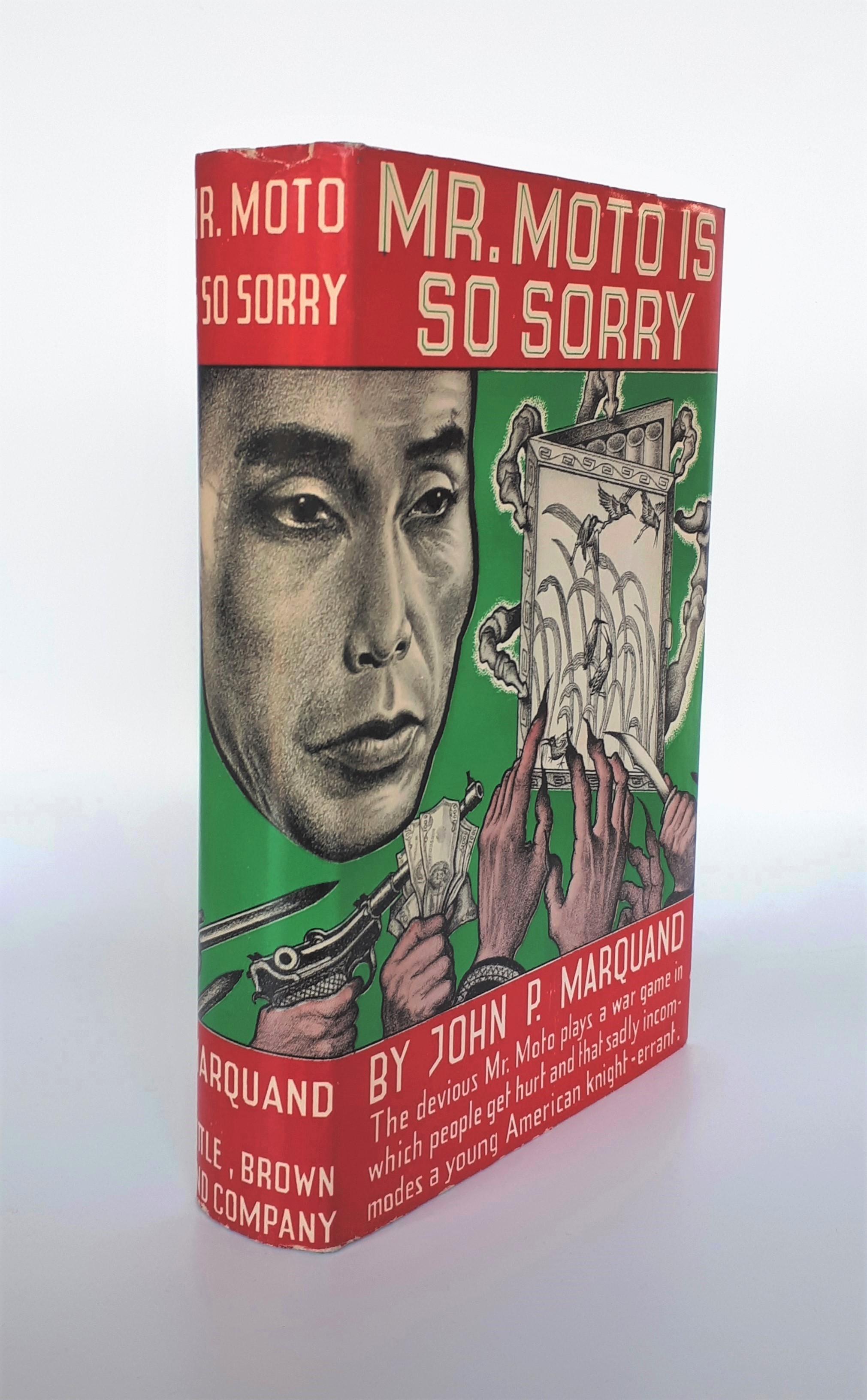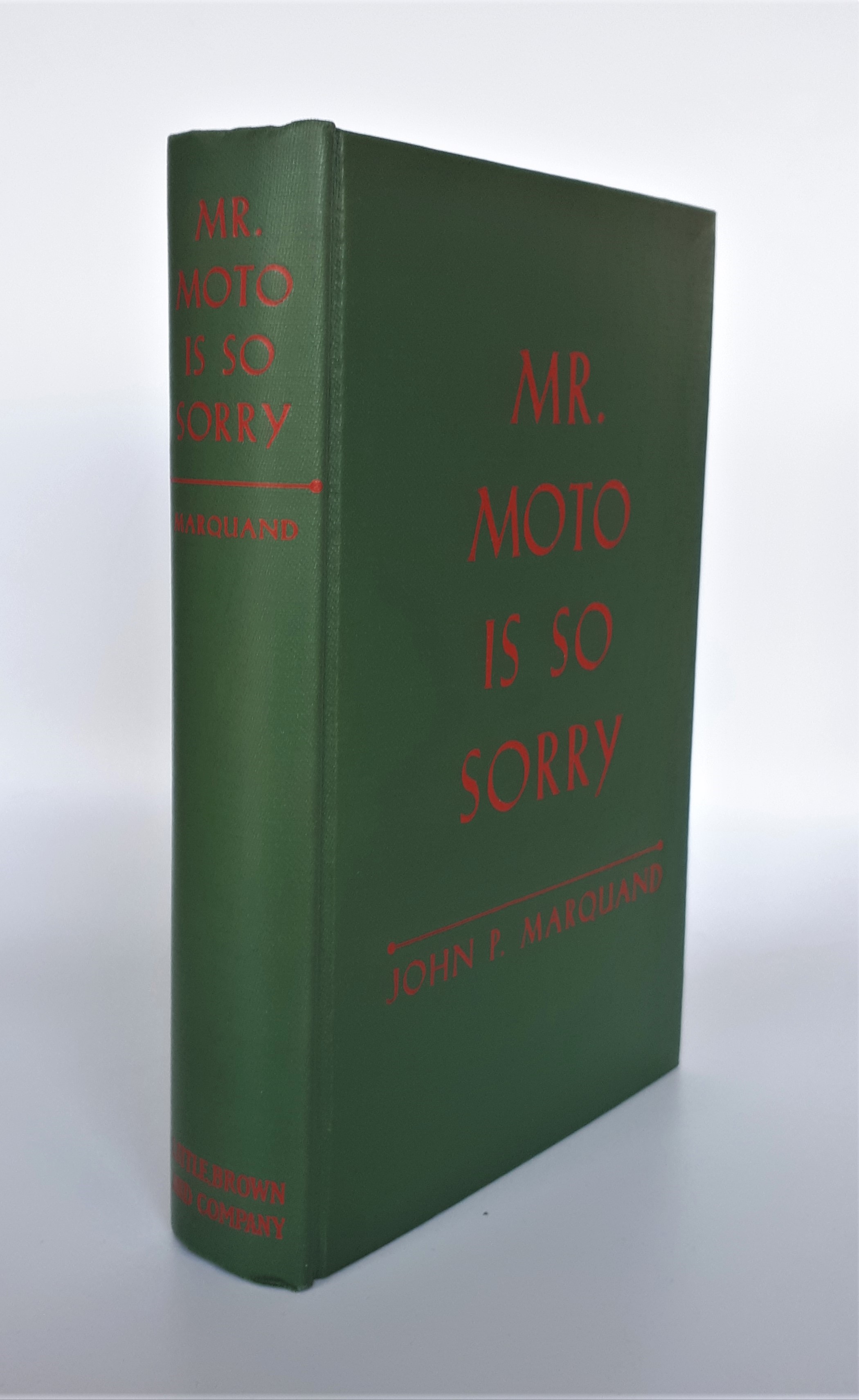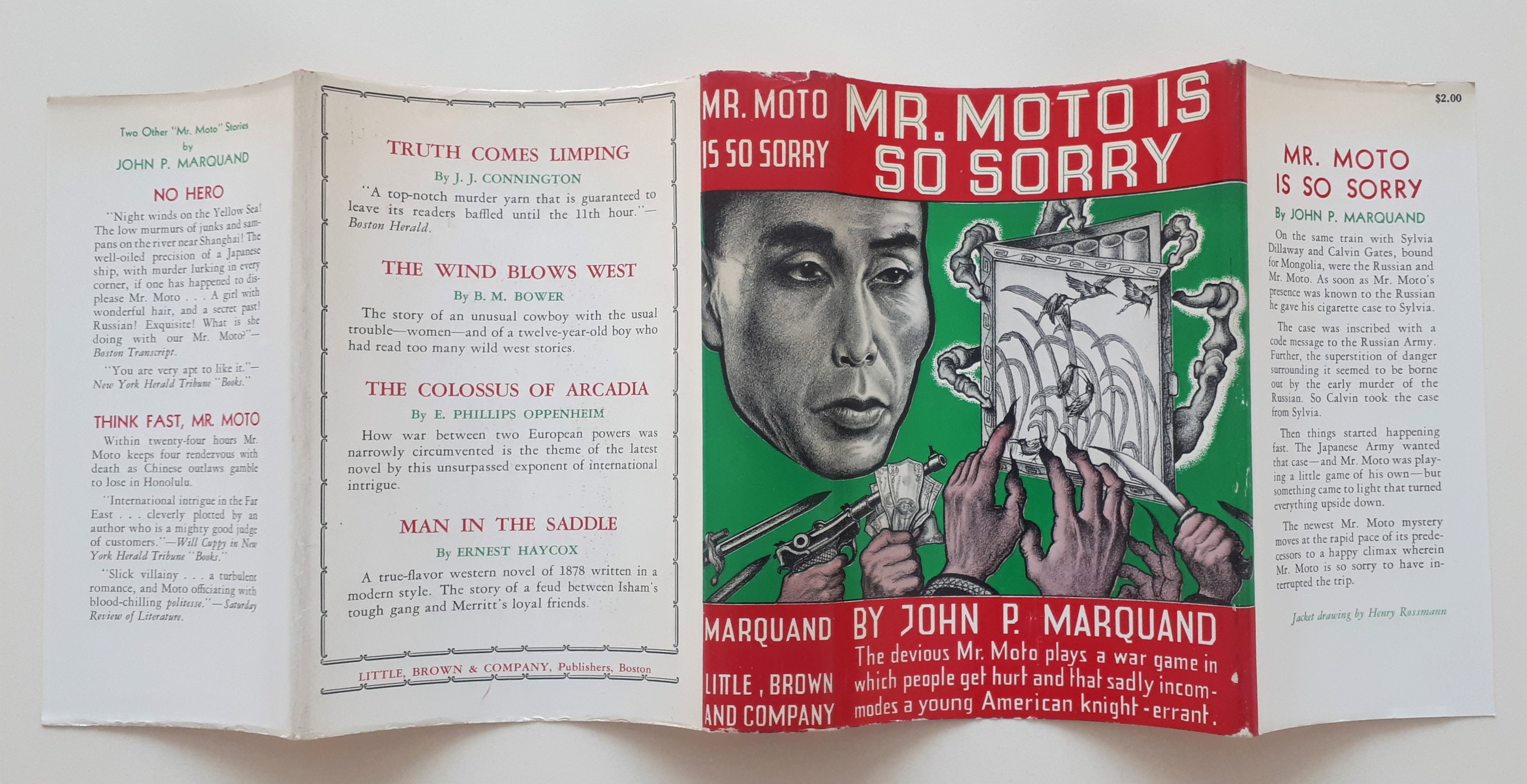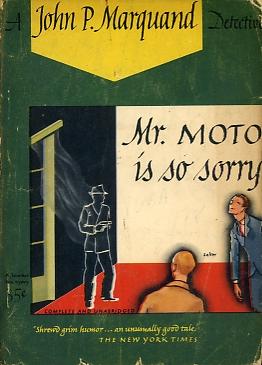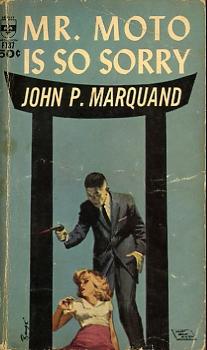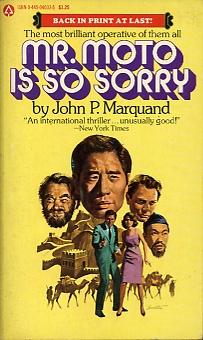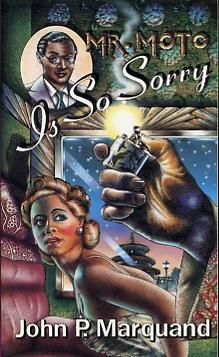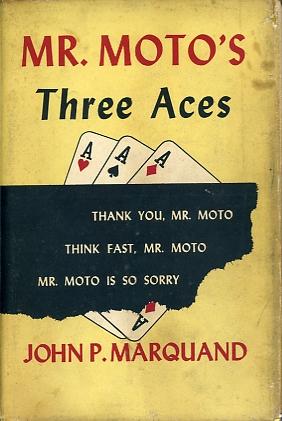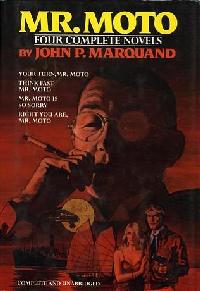Postwar Japanese translation of Mr. Moto Is So Sorry
|
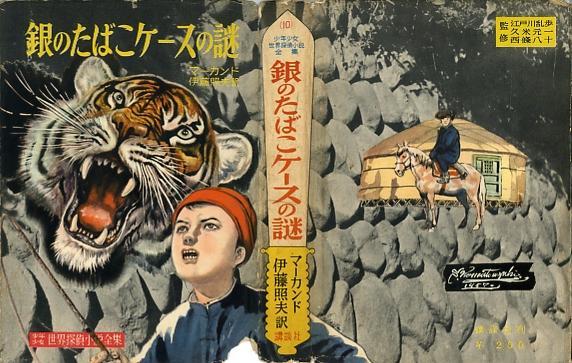
Dust jacket of 1957 Japanese translation
Yosha Bunko scan
|
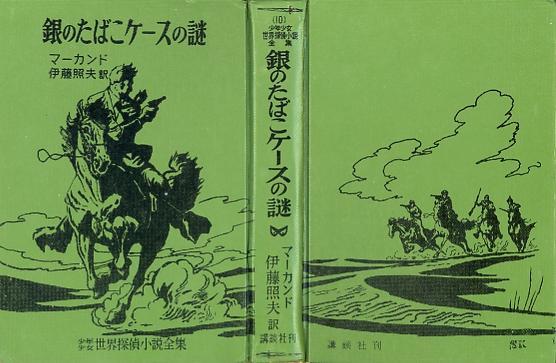
Cover of 1957 Japanese translation
Yosha Bunko scan
|
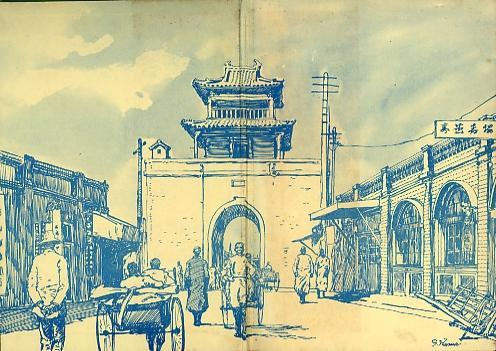
Front end papers of 1957 Japanese translation
Yosha Bunko scan
|
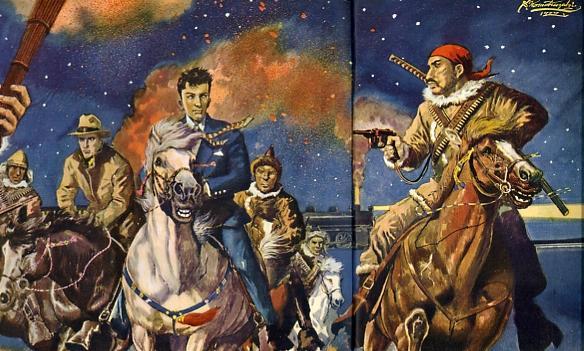
Foldout in 1957 Japanese translation
between title page and start of story
Yosha Bunko scan
|
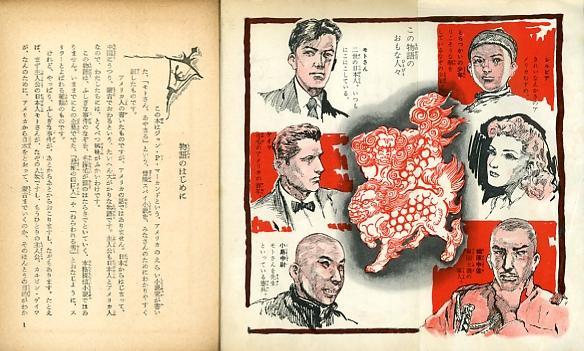
Back of foldout in 1957 Japanese translation
bacing start of story
Yosha Bunko scan
|
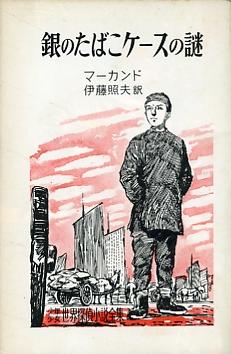
Title page of 1957 Japanese translation
Showing Mr. Moto in local guise
Yosha Bunko scan
|
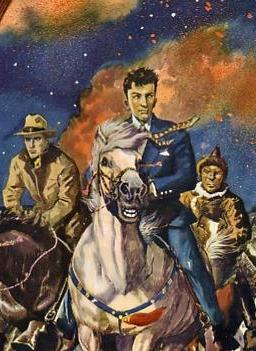
Mr. Moto galloping on a white stallion,
dashing and gallant in suit and tie
Yosha Bunko scan
|
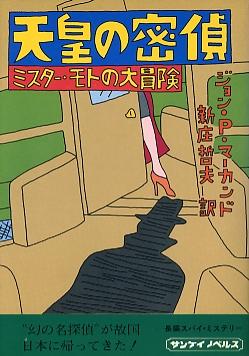
1977 Sankei Novels edition of
Shinjō's translation of
Mr. Moto Is So Sorry
Yosha Bunko scan
|
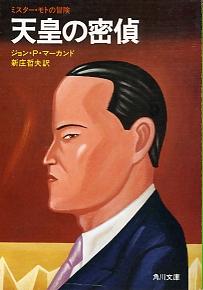
1981 Kōdansha bunko edition of
Shinjō's translation of
Mr. Moto Is So Sorry
Yosha Bunko scan
|
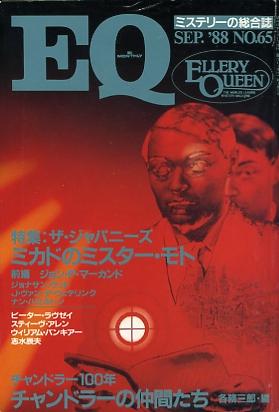
|
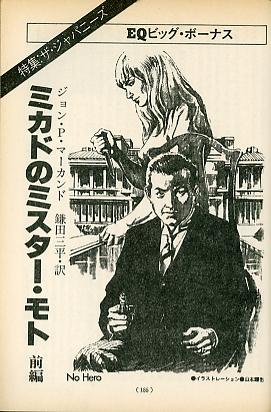
|
|
1st part of Kamata's translation of Marquand's No Hero (1935)
in the September 1988 issue of Ellery Queen
Yosha Bunko scans
|
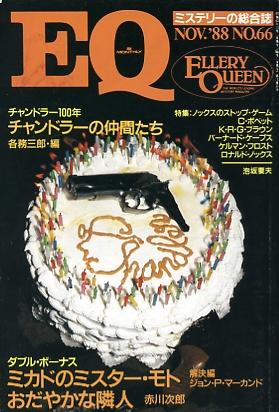
|
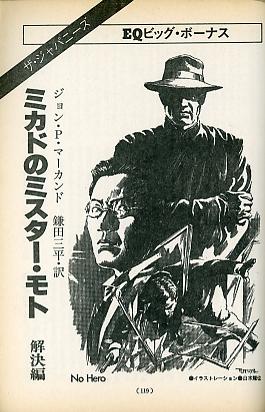
|
|
2nd part of Kamata's translation of Marquand's No Hero (1935)
in the November 1988 issue of Ellery Queen
Yosha Bunko scans
|
|
Right
1940s U.S. Jonathan Press digest edition of
Marquand's first Mr. Moto novel No Hero
Complete and unabridged
Yosha Bunko scan
|
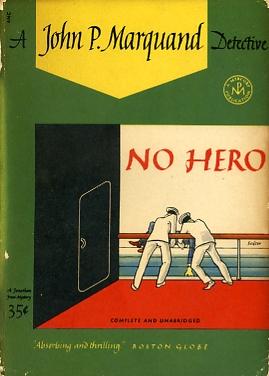
|
Mr. Moto is so handsome
Postwar Japanese edition of
Mr. Moto's "So Sorry" adventure in Manchuria
translated as "Gin no tabako keesu no nazo"
[The riddle of the silver tobacco case]
Searching for used books in one after another store in Tokyo's Kanda Jinbochō district -- before the coming of the Internet, and now the easily searchable website of a consortium of antiquarian book stores throughout the country -- I could spend an entire day, including a break for lunch at a greasy spoon curry shop or Chinese eatery, and come home with only a couple of the books I was looking for, but several I discovered in the process of looking for those on my want list. Roughly 80 percent of my library consists of things I found, blessed by the gods of serendipity.
Searching Kanda bookstore shelves, many of which are not that well organized, is laborious -- like panning for gold. Nothing to show for sweaty and dirt but mud, sand, and gravel -- then suddenly some color -- the unmistakable glow of gold dust or flakes, or the flash of a small nugget -- and now and then something to truly brag about.
Gin no tabako keesu no nazo (銀のたばこケースの謎) -- meaning "The riddle of the silver tobacco case" -- was something to brag about. I almost missed it. Something about the dust jacket caused me to look closer, and I spotted マーカンド (Maakando) -- who had to be John Marquand. But I could not recall a Marquand novel with a silver tobacco case in the title.
Closer examination of the book showed that it was a 1957 translation of Mr. Moto Is So Sorry. It was part of the Shōnen shōjo / Sekai tatei shōsetsu zenshū (少年少女 / 世界探偵小説全集) -- "Young boys and young girls / World detective novels complete collection".
マーカンド
伊藤輝夫訳
小松崎茂絵
銀のたばこケースの謎
東京:大日本雄弁会講談社
昭和三十二年十一月三十日発行
249ページ、単行本、カバー
Maakando [Marquand]
Itō Teruo, translation
Komatsuzaki Shigeru, illustrator
Gin no tabako keesu no nazo
[ Riddle of the silver tobacco case ]
Tokyo: Dai Nippon YūbenKai Kōdansha
30 November 1957 published
249 pages, hardcover, dust jacket
I was then surprised, when looking into the background of the translator, that Itō Teruo was one of several pennames used by Tsuzuki Michio (都筑道夫 1929-2003). I had met and interviewed Tsuzuki at his library and study, in a unit next door to his residence in the same apartment building, in 1976.
Tsuzuki was an extremely versatile and productive writer and translator, and critique, of detective, mystery, and adventure novels. I had wanted to talk to him about his series of novels featuring the protagonist Quillion Sleigh, Poet (An American amateur sleuth in Tokyo). See this link for an account of my meeting with Tsuzuki -- some 30 years or so before I found the Marquand translation, hence a few years after Tsuzuki had died in Hawaii, where his daughter lived with her American husband.
On second thought, there was no reason to be surprised. It would take someone with Tsuzuki's understanding of the value of popular American fiction featuring yellowface Asians to undertake a translation of Mr. Moto Is So Sorry nearly 20 years after it was originally published -- and over a decade after the end of the imperial era in which it was set.
The notion of introducing Mr. Moto Is So Sorry in post-imperial Japan -- to youthful readers of Japanese, no less -- was, however, inexplicably surprising. The publishers turned it into an adventure tale -- which, in a manner of speaking, it was -- never mind how the story was publicized in the United States and elsewhere, in its English editions and European-language translations.
Yellowface Asians
If you are puzzled by the "yellowface Asians" characterization, see first my review of Elaine Kim's Yellow English (Asian American Review, 1975) on the "Images" page of this website, and my article on Ethnolinguistic discrimination: Fruit, people, yellowface English (The English Journal, March 1978) under my review of Hisaye Yamamoto's literature on the "Themes" page of this website. My interview of Kim in her office at the University of California at Berkeley, on the subject of "Yellow English", appears in the same March 1978 issue of The English Journal, for which I worked as a contributing editor. The interview -- titled "Asian Americans and Yellow English" -- is featured on the cover in Japanese, which shows "Yellow English" as "Iyeroo Ingurisshu" (イエロー・イングリッシュ).
In a nutshell, "yellow English" is the fake English spoken by fake Asians, in fiction written by people who are not really familiar with Asian countries and their peoples. Inspired by Kim's "yellow English" characterization, and expressions like "blackface" and "redface" and "whiteface" in reference to people who make themselves up to appear black, red, or white in order to play black, red, or white roles. I coined the expressions "yellowface fiction" -- and "yellowface English" and "yellowface Asians" -- to refer to fiction, English, and Asian characters created by non-Asians -- meaning people who are not from Asia, including people who may be of Asian ancestry, but were not raised or educated in Asia, and view Asian countries and their peoples through essentially non-Asian eyes.
Which is not to say that "Asian eyes" and "non-Asian eyes" exist other than in racialist and ethnonationalist fantasies. This, of course, is the whole point of "the Steamy East" as a caricature of a world that exists primarily in stereotypes, illusions, and delusions about "the East" -- whether or one's gaze is Oriental, Occidental, or Martian.
Top
Earlier Japanese translation
I have not seen, but am aware of, the following contempory Japanese version, which came out a year after the 1st English edition in America.
ジョン・マーカンド
水谷博訳
蒙古の暁嵐
東京:紫文閣、昭和十四年
John Marquand
Mizutani Hiroshi, translation
Mōko no gyōran
[ Dawn (storm) over Mongolia ]
Tokyo: Shibunkau, 1939
In this novel, "Mister Moto" becomes "Mutō-shi" (武藤氏) or "Mister Mutō" -- as "Moto" is not a proper family name in Japanese.
"Mōko" (蒙古) is Sino-Japanese for "Mongolia".
"Gyōran" combines"akatsuki" (暁) meaning "dawn" with "arashi" (嵐) meaning "storm". As such it adds a bit of turbulence to the tranquility of the night as it breaks into a new day.
Top
Later Japanese translations
A third translation of Mr. Moto Is So Sorry came out in a hardcover edition in 1977 and a bunko (pocketbook) edition in 1981.
ジョン・P・マーカンド
新庄哲夫訳
天皇の密偵
東京:サンケイ出版
一九ナナ年九月 (解説)
286ページ、単行本、カバー
John P. Marquand
Shinjō Tetsuo, translation
Tennō no mittei
(Misutaa Moto no bōken)
[ The emperor's secret agent ]
[ (The adventurers of Mister Moto) ]
August 1977 (date of "Commentary")
286 pages, hardcover, dust jacket
The translation was serialized in the weekly magazine Shōkan Sankei (週刊サンケイ) from 25 November 1976 to 21 July 1977.
A bunko edition, in 348 pages, was published by Kadokawa Shoten (角川書店) on 28 February 1981 with postcrip by the translator dated January 1981.
See scans of copies in Yosha Bunko to the right.
Top
Ellery Queen serialization of No Hero
Postwar Japanese publishers invested in translations of foreign detective fiction noted the continuing popularity of the Fumanchu, Charlie Chan, and Mr. Moto novels in the United States. In late 1988, the bi-monthly EQ (Ellery Queen), published by Kōbunsha, published Marquand's first Mr. Moto novel -- No Hero -- in two parts.
ジョン・P・マーカンド
鎌田三平・訳
ミカドのミスター・モト
EQ
東京:光文社
前編:昭和63年9月1日発行、第11巻5号
通巻 No. 65、ペイジ184-234
解決篇:昭和63年11月1日発行、第11巻6号
通巻 No. 66、ペイジ119-169
John P. Marquand
Kamata Sanpei, translation
Mikado no Misutaa Moto
[ The Mikado's Mister Moto ]
EQ
Tokyo: Kōbunsha
First part: 1 September 1988, Volume 11, Number 5
Series No. 65, pages 184-234
Final Part; 1 November 1988, Volume 11, Number 6
Series No. 66, pages 119-169
See scan of copy of 1940s U.S. Jonathan Press digest edition of No Hero to the right. The blurb on the back cover of this edition reads as follows.
NO HERO
Small, suave, Japanese secret agent Mr. Moto knew a good candidate for a spy when he saw one. And the young, slightly foolish and slightly drunk American pilot, Casey Lee, fitted the bill perfectly. Casey didn't need much persuasion -- not with golden-haired Sonya, Moto's paid temptress, batting her eyelashes at him. The first Jog was simple -- a short "all expenses paid" boat ride to Shanghai, where he was to circulate among his ex-cronies in the Navy and find out what they knew that Mr. Moto might like to know. A harmless task, Casey though -- nothing too confidential could have reached those guys, and after this one job he'd call it quits. But Mr. Moto's plans were rarely as simple as they appeared, as Casey unhappily learned one night when he found Sonya in his stateroom with a bloody knife in her hand and a corpse on the floor.
|
